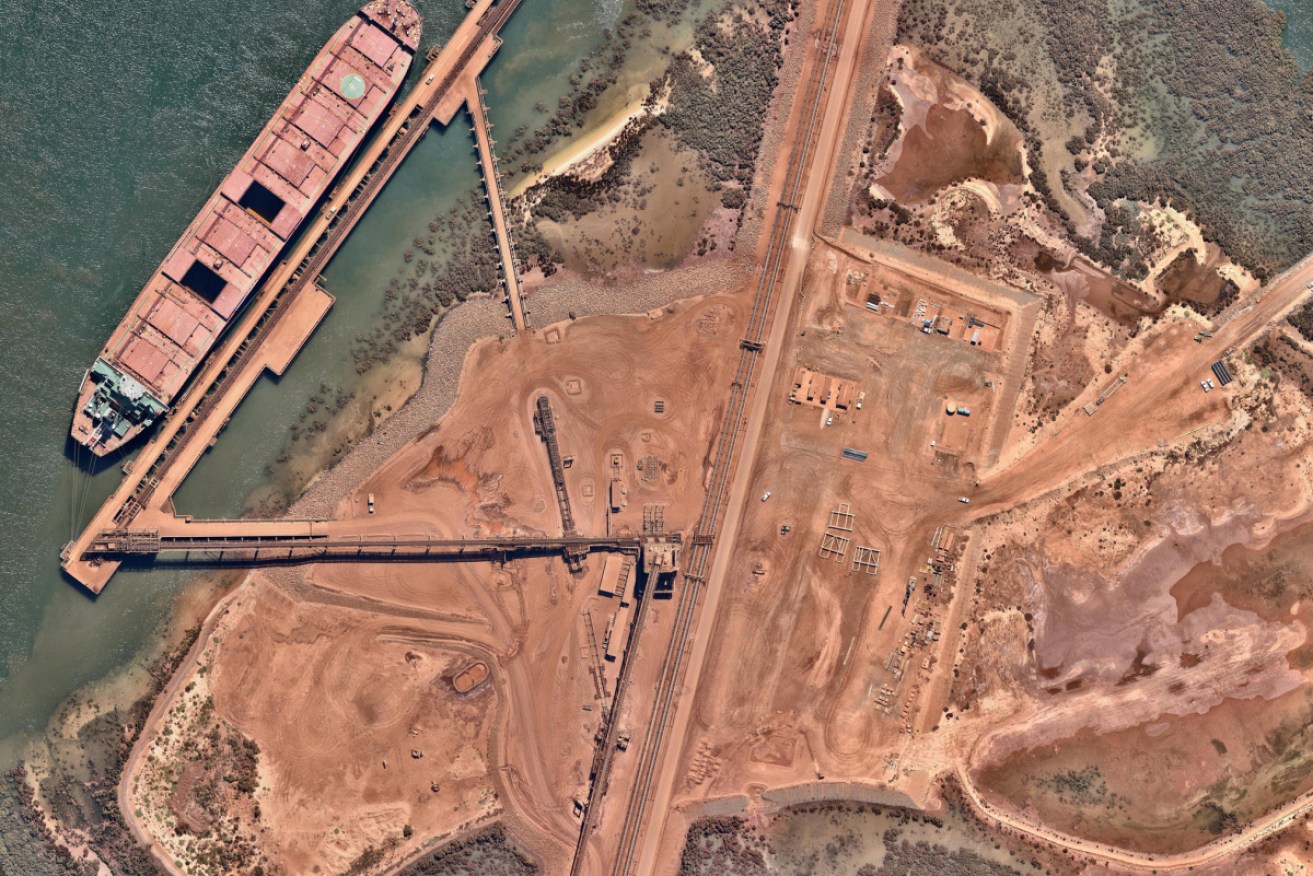RBA warning on the economy, but there’s more iron ore cash to splash


An iron ore shipping facility at Port Headland, in Western Australia. Photo: Getty
The latest Reserve Bank board minutes represent another step in the central bank’s march towards again cutting interest rates – an event that would mean the Australian economy is in trouble, whatever Scott Morrison says about six years of Coalition management.
The good news is that whoever wins on May 18, the federal government is likely to have more money to spend on the economy– if it has the will to do so.
The bad news first.
The RBA’s April minutes included unprecedented detail on the board weighing the possibility of moving rates. If you’ve never read RBA board minutes before, you might well gain the impression the board was doing a lot of “on one hand, but on the other hand” prevarication before deciding fairly clearly that “there was not a strong case for a near-term adjustment in monetary policy”.
But the RBA doesn’t work quite like that. Since the Martin Place mandarins first came back from holidays this year, they’ve been working towards the possibility that they will have to try again to stimulate the economy in the absence of federal government action.
First there was a little admission that it was possible the next rate move could be down rather than up. That was a big change from the previous messaging that the next move would indeed be up.
The winks and nudges since then culminated in the latest minutes almost spelling out that the RBA will cut the cash rate if the unemployment rate ticks up, instead of down. There may not have been a “strong case”, but there’s admission of a case.
In RBA speak: “Members also discussed the scenario where inflation did not move any higher and unemployment trended up, noting that a decrease in the cash rate would likely be appropriate in these circumstances. They recognised that the effect on the economy of lower interest rates could be expected to be smaller than in the past, given the high level of household debt and the adjustment that was occurring in housing markets.
“Nevertheless, a lower level of interest rates could still be expected to support the economy through a depreciation of the exchange rate and by reducing required interest payments on borrowing, freeing up cash for other expenditure.”
There is no surprise in the RBA being prepared to act, but in the RBA saying it’s prepared to act is a warning.
Make no mistake about what further cuts in the cash rate would mean: The Australian economy has been poorly managed with no credible effort to promote stronger growth, no plan to lift productivity, nothing but a vague hope that real wages will rise at some stage, no increase in the federal government’s infrastructure investment – simply no plan beyond a failed attempt to cut all company tax and a distant promise of slashing personal income tax, primarily for the better off.
Within Treasurer Josh Frydenberg’s budget papers remains the Treasury expectation of household consumption getting weaker despite the $1080 direct deposits coming in July and August for millions of taxpayers. It doesn’t inspire confidence.
With the RBA and Treasury supping from the same forecasting bowl, reading between the lines of the minutes doesn’t help confidence either.
Yet, if the next government has the ticker, there is the potential for more immediate fiscal stimulus.
The budget figuring was done with a conservative view of what iron ore prices might be. Treasury has been bitten too often by being too optimistic on commodity prices. This time it could well be too pessimistic.
Thanks to the Brazilians’ apparent inability to build a dam wall that won’t break, iron ore prices may well go higher and stay there for longer.
Fund manager Mike Mangan thinks Brazil’s giant iron ore miner, Vale, won’t be able to re-open any of its wet-processing mines any time soon after the disastrous collapse of a tailings dam in January killed some 300 people.

Scenes after the collapse of the dam at the Córrego do Feijão mine of the Brazilian mining company Vale in January. Photo: Getty
About a quarter of Vale’s production was halted, some 93 million tonnes a year lost to the market.
“Despite this, Brazilian exports initially held up, no doubt drawing down stockpiles,” Mr Mangan wrote in his latest newsletter. “Brazilian iron ore exports only plunged in late March/April. Sailing time from Brazil to China is about 45 days.
“So any Chinese shortages won’t show up until the end of April. With criminal charges pending against Vale and its employees for manslaughter and possibly murder, I think it’s highly likely Vale’s [iron] mines won’t re-open any time soon.”
Australia’s iron ore exports were reduced by Cyclone Veronica, a temporary matter but one that, on top of the Vale disaster, has helped boost iron prices by between 33 and 100 per cent this year – depending on the quality of the ore.

Source: marketindex.com.au
Mr Mangan warns that the consensus market view is that the high iron ore price is temporary.
“The strong expectation is that Vale will soon re-open their mines, at which point the [iron] price will collapse back to about where it was before the late January dam collapse,” he wrote.
“I’m not sure this view is right. Currently Vale execs have more important things on their mind than maximising profits. Their first priority is staying out of jail.
“It appears Vale appointed ‘independent experts’ to certify their dam’s safety on the basis they would. If not, they were shown the door. That’s a typical corporate MO.
“The reward is billions in continual cash flow. The risk in Vale’s case was catastrophic dam failure.
“Apart from Vale’s apparent criminality, there is also a judicial and political element to consider. It shouldn’t be forgotten this is not Vale’s first dam failure. Another dam collapsed in November 2015 (BHP owned 50 per cent) with 19 killed.
“So Brazilian judges and pollies will be reluctant to sanction mine re-openings unless absolutely certain a third dam won’t collapse.
“Until those mines re-open, expect Australia’s [iron] producers to continue outperforming as consensus catches up to Vale’s dilemma. Given all the above, I think this might be one of those rare years where fund managers underweight these very large cap [iron] stocks struggle to outperform.
“There will be a time to take profits. I just don’t think we’re there yet. For all the above reasons, I’m happy to stay overweight both BHP and Rio. But clearly one eye needs to remain laser focused on Brazilian judicial developments.”
What matters for the economy – and federal government – is that higher-for-longer iron ore prices would mean billions of extra dollars in tax revenue and shareholder dividends just as the housing construction downturn hits.
The extra billions will be temporary – eventually Vale will get back to work and some miners might be tempted to open new mines – but while the money rolls in, the government has the opportunity to either sock it away towards debt reduction and a bigger-than-forecast budget surplus for 2019-20, or invest the windfall in responsible stimulus.
Regular readers of this space already know what could be very constructively achieved: Direct government investment in social and affordable housing.
It’s “shovel ready”, it would fill the gap in the looming construction slowdown, absorb the threatened supply overhang, employ tradies who are good at spending money, spur retail activity furnishing new housing, and deal with a particularly insidious, invidious and worsening social problem.
But all that requires a government prepared to do it. The RBA keeps hoping.








